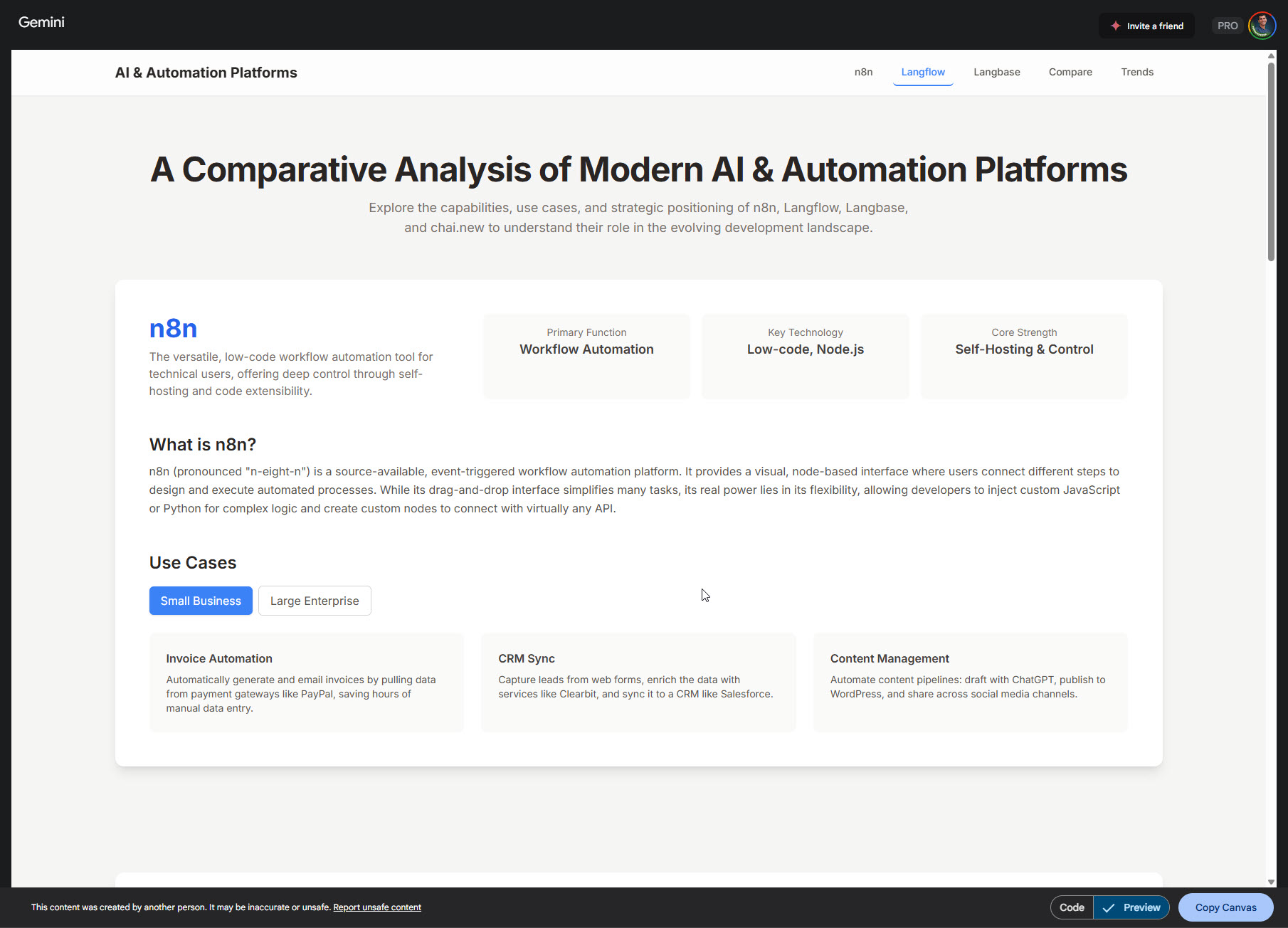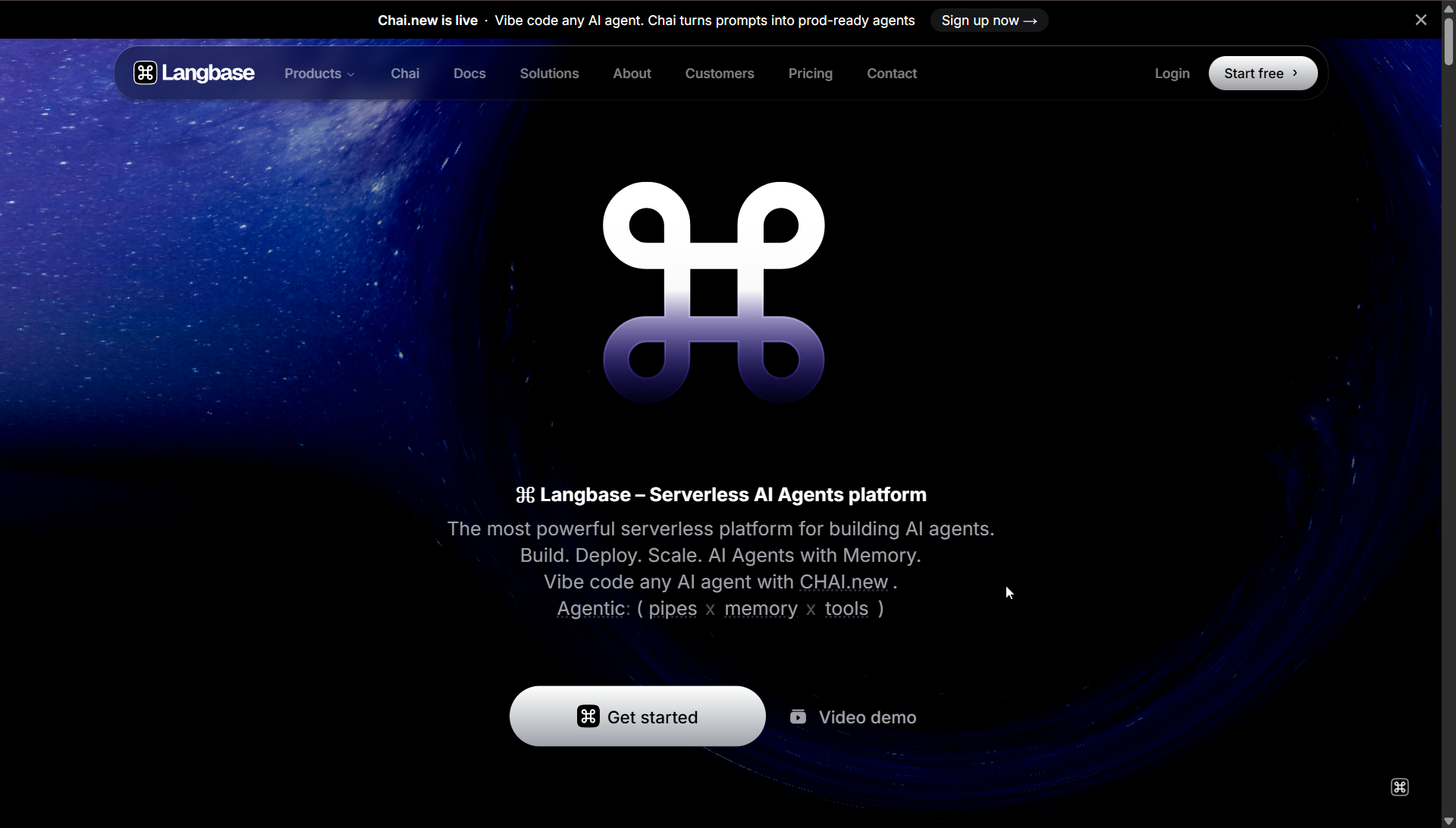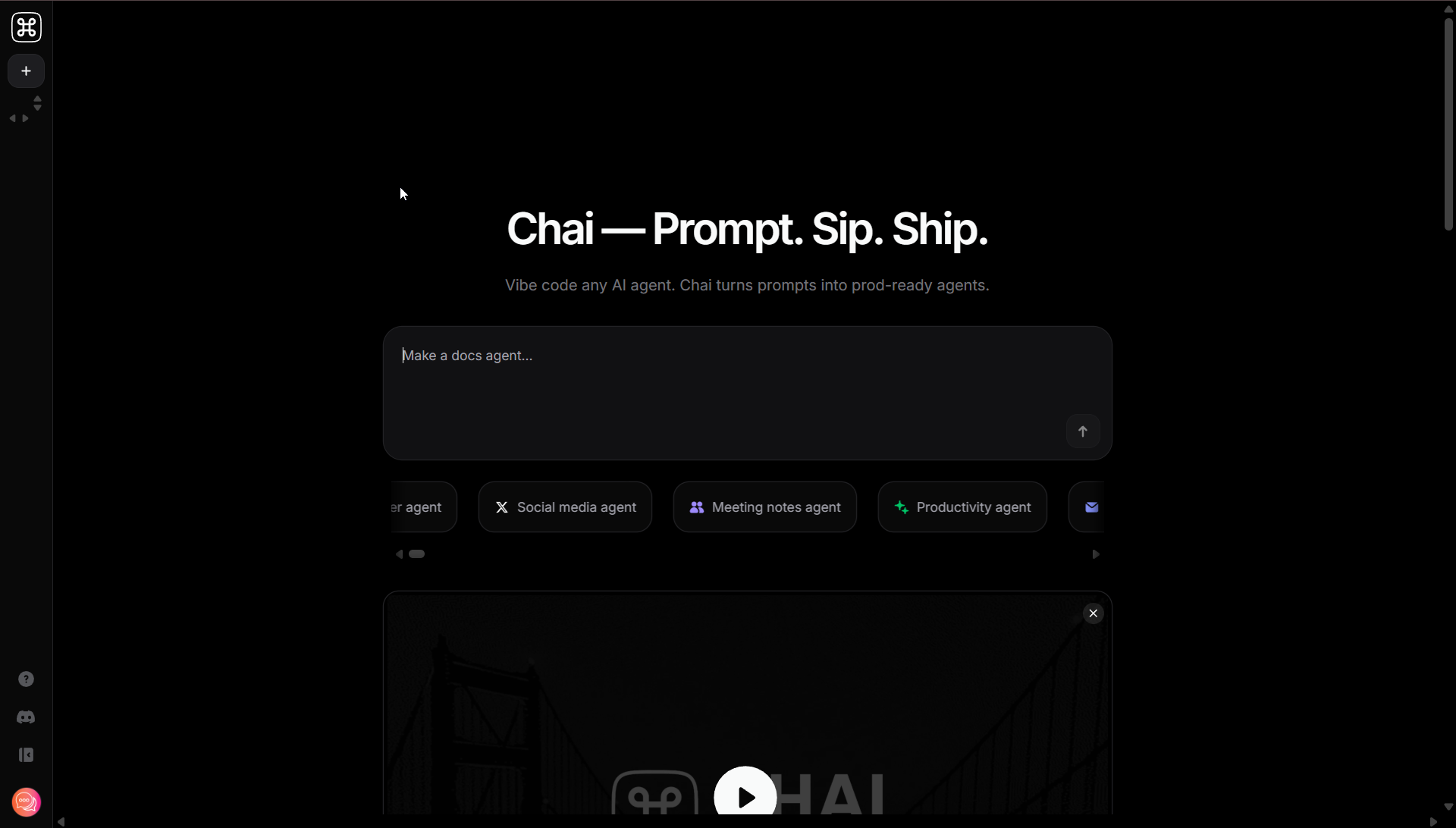The landscape of automation and AI development is rapidly evolving. As organizations look to streamline operations and harness AI, selecting the right platform becomes a pivotal decision. Four leading contenders - n8n, Langflow, Langbase, and chai.new - bring distinct approaches to workflow automation and AI agent creation, each tailored to different users and business objectives.
Explore this Post Interactively
Each platform has it's pros and cons however they are each exceptionally powerful. Personally I have leveraged each of these platforms to create automations for my work and personal life that amplify my exposure and ease my daily burdens.
For instance, for my News blog I built an Agent with Chai.new that is deployed with 0 config on Langbase. The Agent allows me to search a list of blogs that I track, select articles for review and create content for my News blog with just 2 clicks. My News blog would simply not be possible without powerful smart automation.
While Chai.new allows you to create powerful agents through Vibe coding, it is inherently more expensive and less secure since it runs on proprietary hardware in the cloud as service. That is where Langflow and n8n shine. They can easily be run on private cloud hardware or locally allowing me to control the data flow precisely, excellent for companies which require data security.
Langflow - a tool to visually build agents based on LangChain - is also now available in DataStax.com , a super powerful database as a service platform recently acquired by IBM. This availability means that you don't need to manage your hardware to support the open source version but hand off data governess to IBM, which personally I don't have an issue with. Currently the integration is in beta but I have enjoyed the easy creation and deployment of agents using the platform without worrying about hardware configurations and updates!
Similarly, n8n can be run locally or through n8n.io in the cloud. The choice between the two will depend on your automation and data security requirements. Both Langflow and n8n allow you to build powerful agents in the cloud to manage nearly every aspect of your business.
What Sets Each Platform Apart?
- n8n.io: This open-source, low-code workflow tool is built on Node.js. Its intuitive visual interface allows users to connect nodes for everything from simple automations to intricate, code-driven workflows. Self-hosting is a standout feature, providing optimal data control and compliance for businesses with strict requirements.
- Langflow: Designed for accessibility, Langflow offers a drag-and-drop canvas and Python extensibility. Both technical and non-technical users can prototype, iterate, and deploy AI applications quickly, making it ideal for collaborative teams.
- Langbase: Built for developers, Langbase is a serverless platform that excels at creating and scaling composable AI agents. It supports over 250 LLMs and prioritizes Retrieval Augmented Generation (RAG) and persistent memory, ensuring production-grade performance for complex AI systems.
- chai.new: Developed by Langbase, chai.new lets users generate AI agents instantly from natural language prompts, a process dubbed “vibe coding.” Agents deploy directly on Langbase’s infrastructure, shortening the path from idea to execution
Platform | Primary Function | Key Technology | Ideal User Profile | Core Strength |
n8n | Low-code workflow automation | Low-code, Node.js, Event-driven | Technical users, IT Ops, DevOps | Versatility, self-hosting, cost-effectiveness, extensibility |
Langflow | Visual AI application and agent workflow development | Low-code, Visual AI Builder, Python | Developers & non-developers (with AI understanding) | Intuitive AI development, rapid prototyping |
Langbase | Serverless AI agent development and deployment platform | Serverless, Composable AI, RAG, Multi-LLM | Developers (including non-AI/ML experts) | Scalable AI agents, RAG, developer experience |
chai.new | Prompt-driven AI agent creation (on Langbase) | Natural Language Processing, Langbase Infrastructure | Users seeking rapid agent prototyping from ideas | Extreme speed from idea to agent, seamless Langbase integration |
Matching Platform to Purpose
- n8n: Best suited for technical teams requiring customizable automations, particularly where data sovereignty and self-hosting are priorities.
- Langflow: Perfect for mixed-skill teams and rapid prototyping, thanks to its visual, collaborative environment.
- Langbase: Geared toward developers seeking advanced, scalable AI agents with robust memory and multi-LLM support.
- chai.new: Ideal for anyone needing near-instant AI agent deployment from simple prompts, leveraging Langbase’s backend power.
Deployment, Integration, and Extensibility
n8n and Langflow both cater to diverse deployment needs, supporting self-hosting and managed cloud options through Docker, Kubernetes, or third-party providers.
Langbase is inherently serverless, emphasizing cloud deployments and API-first integration. chai.new operates as a fast-track deployment tool exclusively on Langbase's platform.
Each platform prioritizes extensibility: n8n enables custom nodes in JavaScript or Python; Langflow allows Python-based component tweaks; Langbase offers SDKs and APIs for multi-language integration; chai.new supports code refinement of its generated agents.
Strengths and Strategic Advantages
- n8n: Excels in self-hosted automations and broad integrations, with an open-source model that is both scalable and cost-effective.
- Langflow: Democratizes AI development with its user-friendly, visual interface and the flexibility of open-source customization.
- Langbase: Provides production-ready infrastructure for advanced AI agents, highlighting RAG, memory, and seamless orchestration of multiple LLMs.
- chai.new: Offers unmatched speed and accessibility for creating sophisticated AI agents directly from prompts, serving as an easy entry point to Langbase’s capabilities.
Emerging Trends and Takeaways
- Hyper-automation: Platforms increasingly support complex, end-to-end process automation.
- Democratization of AI: Visual and low-code tools are making AI accessible to wider audiences.
- RAG as a Standard: Persistent memory and data grounding are critical for enterprise AI, as exemplified by Langbase.
- Serverless and Multi-agent Architectures: Scalability and orchestration of specialized agents are becoming the norm.
Ultimately, organizations must assess their technical expertise, compliance requirements, automation complexity, and urgency to select the best platform. Whether prioritizing visual accessibility (n8n, Langflow) or advanced agentic infrastructure (Langbase, chai.new), the future of automation is modular, composable, and highly accessible, empowering teams to innovate swiftly.









Platform Showdown: Choosing the Right Automation and AI Development Solution